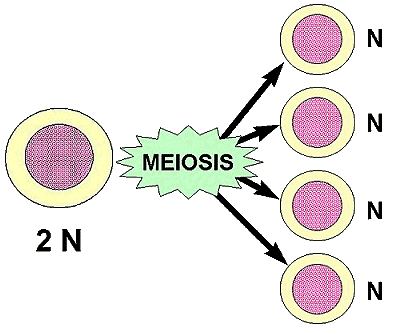Page 1: Overview

Meiosis consists of two divisions: meiosis I and meiosis II. Prior to meiosis, DNA and the rest of the chromatin are replicated during the S-phase of premeiotic interphase. After replication, each chromosome contains two, identical chromatids. The chromatids will not be visible through light microscopy as structures until midway through prophase I. Most diagrams of meiosis show that each chromosome entering meiosis consists of two, parallel chromatids.
Meiosis I is characterized by a relatively long prophase during which homologous chromosomes pair (synapsis) and exchange DNA (crossing over). In many organisms prophase I may last approximately one day, whereas in some organisms prophase I may last more than a week. Examples: European larch (Larix)—prophase I may last over winter; human females—prophase I may last approximately 40 years (from birth to menopause).
Metaphase I, anaphase I, and telophase I occur fairly rapidly, in most cases in less than a few hours. Meiosis II likewise takes a relatively short time to complete, ranging from a few hours to just a little less than a day.
In most cases, there are four haploid (n) products from each cell (meiocyte) that enters meiosis.

